This is a collection of articles that will help you when you want to add movement to your character or avatar.
Rigging
This article shows how to manually add bones to a T-Pose character using Blender.
It also describes how to set the bone weight.
In the above article, the bones are set manually, but it seems that you can also set them automatically using an add-on called Rigify.
The steps from installation to setting the bone weights are short, so even those who are not good at this process do not have to worry.
Rigify is not enough! If you are not satisfied with Rigify, I recommend you to use Blender’s paid asset Auto-Rig Pro.
If you are not satisfied with Rigify, I recommend you to try Auto-Rig Pro, a paid asset of Blender that supports various models such as animals and insects in addition to characters.
Animation
After adding the bones, you can refer to this article.
This is how to make an animation of a character walking in Blender.
It also shows how to manage a series of actions in a dopesheet.
You can also add animations in DAZ Studio, a character creation software.
It comes with a few preset actions, but there are also many animations available in the official shop.
This article shows how to set up animations using a web service called mixamo.
The entire process from the animation list to setting up the animation is completed on the web, so there is no need to download software.
Many animations that are too difficult to create on your own, such as dance and battle actions, have been uploaded and are worth a look.
Virtual Motion Capture
In this article, motion capture is done with SteamVR and Final IK, the animation is output with EasyMotionRecorder, and keyframes and facial expressions are edited with VeryAnimation.
Even the fine movements of the fingers on the piece are well recognized.
It is also possible to move the VRM model in Unity with a tool called EasyVirtualMotionCaptureForUnity (EVMC4U).
This tool is very useful as it allows you to control various things such as button input, camera movement, and bone settings.
There is also a way to record and output motion capture animation with EVMC4U and EasyMotionRecorder.
Here’s how to add motion as a Vtuber.
This video shows how to combine a chroma-keyed VRM model with a STYLY prepared spatial image as a background.
How to use a free MR compositing tool called LIV is explained in these three articles.
It seems to be able to capture images as if your avatar is in the STYLY VR space.
The avatar can also edit the STYLY work, so you can enjoy it from a different angle than experiencing the work itself.
Games
This is a useful tip if you want to make a game that is perfect for VR productions.
This article will help you create a game where you can defeat many enemy characters coming at you from random positions.
This article shows you how to upload a humanoid character with bones and weights adjusted, animate it, and set up hit detection for weapons and enemy characters.
There is also a way to create an enemy character using the Ragdoll Helper from Unity assets and STYLY’s Interaction SDK on a humanoid model animated with mixamo.
Using Unity’s NavMeshAgent, you can play tag in STYLY.
It’s up to you whether you want to run away from scary enemies or enjoy chasing after your favorite characters!
Uploading and data conversion
This is how to convert to VRM, the file format for humanoid avatars and characters.
Uploading to STYLY is also possible.
Learn VR/AR content creation with no experience!
NEWVIEW SCHOOL ONLINE is an online learning site where you can learn Unity and PlayMaker from basic to advanced, and learn the production process (and production techniques) of the attractive contents distributed on STYLY!
- You can create VR/AR contents without writing programming code.
- Officially supervised Unity courses are available.
- Additional elements such as photogrammetric production methods and content weight reduction are available.
- You can learn how to think about creating VR/AR content.
![[Blender for Beginners] Let’s start Modeling Part 5 – Adding Bones Manually](https://styly.cc/wp-content/uploads/2018/12/8-1.png)
![[Blender for Beginners] Let’s start Modeling Part 6 – How to Add Armatures (bones)](https://styly.cc/wp-content/uploads/2018/12/9-2-1.png)
![[Blender 2.81] Moving a character with Auto-Rig Pro](https://styly.cc/wp-content/uploads/2020/01/スクリーンショット-2020-01-15-15.44.51-1-160x160.png)
![[Blender for Beginners] Let’s Start Modeling Part 7 – Animating Bones](https://styly.cc/wp-content/uploads/2019/01/27.png)
![[DAZ Studio] (1) How to download / Basic operation / Creating a human body model](https://styly.cc/wp-content/uploads/2021/01/IMG_9201-1-160x160.png)
![[Unity] Creating original animations using motion capture](https://styly.cc/wp-content/uploads/2019/09/MotionCapture_EyeCatch-160x160.png)
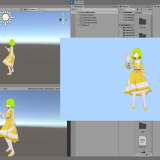
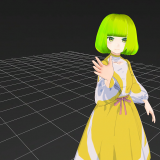

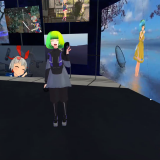
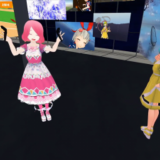

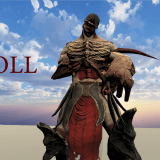
![[Unity / NavMesh] Let’s play VR game of tag with AI](https://styly.cc/wp-content/uploads/2021/01/スクリーンショット-2021-02-01-17.47.29-160x160.png)
![[Unity] Convert Humanoid FBX File into VRM](https://styly.cc/wp-content/uploads/2019/05/8-1-160x160.png)

